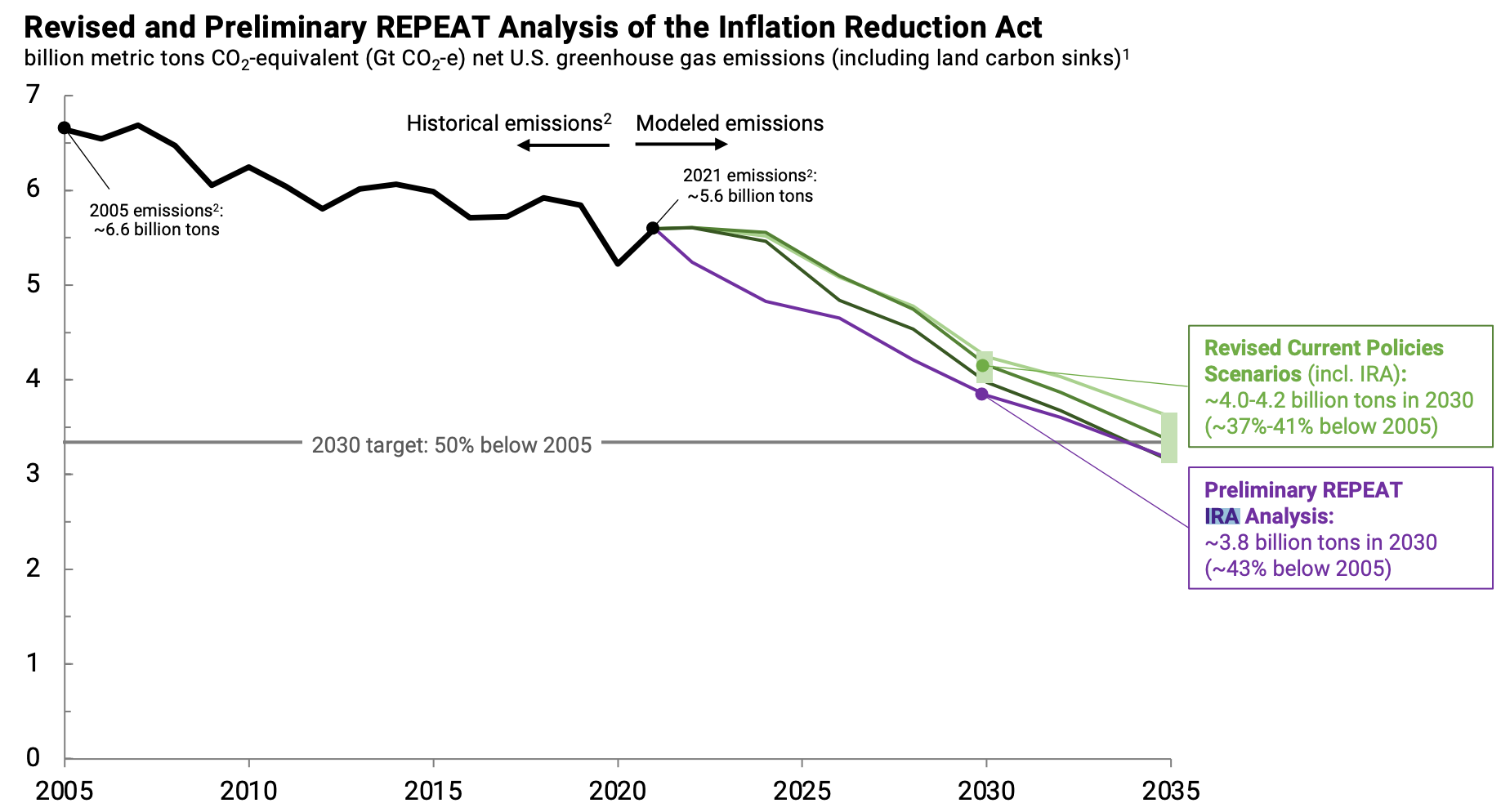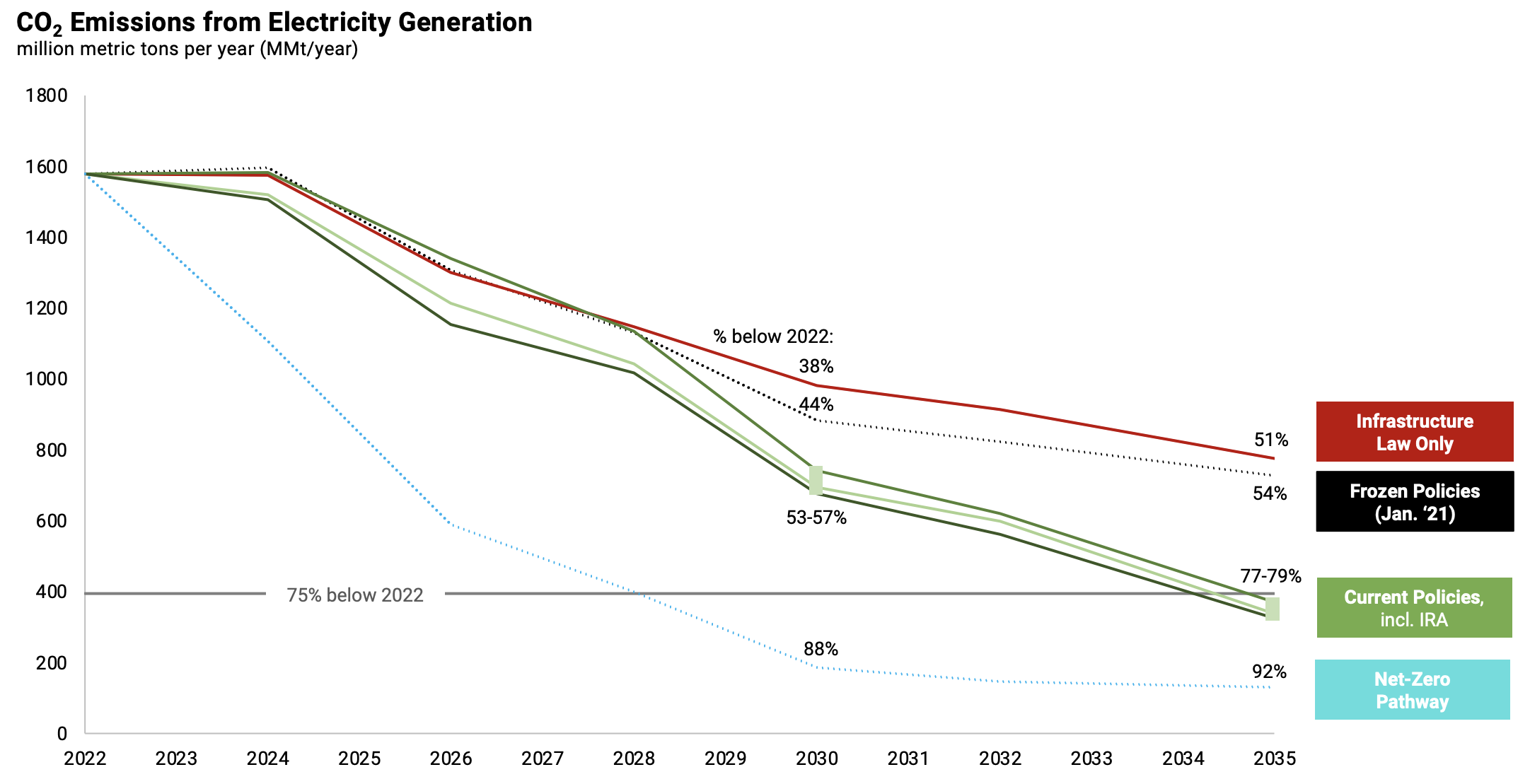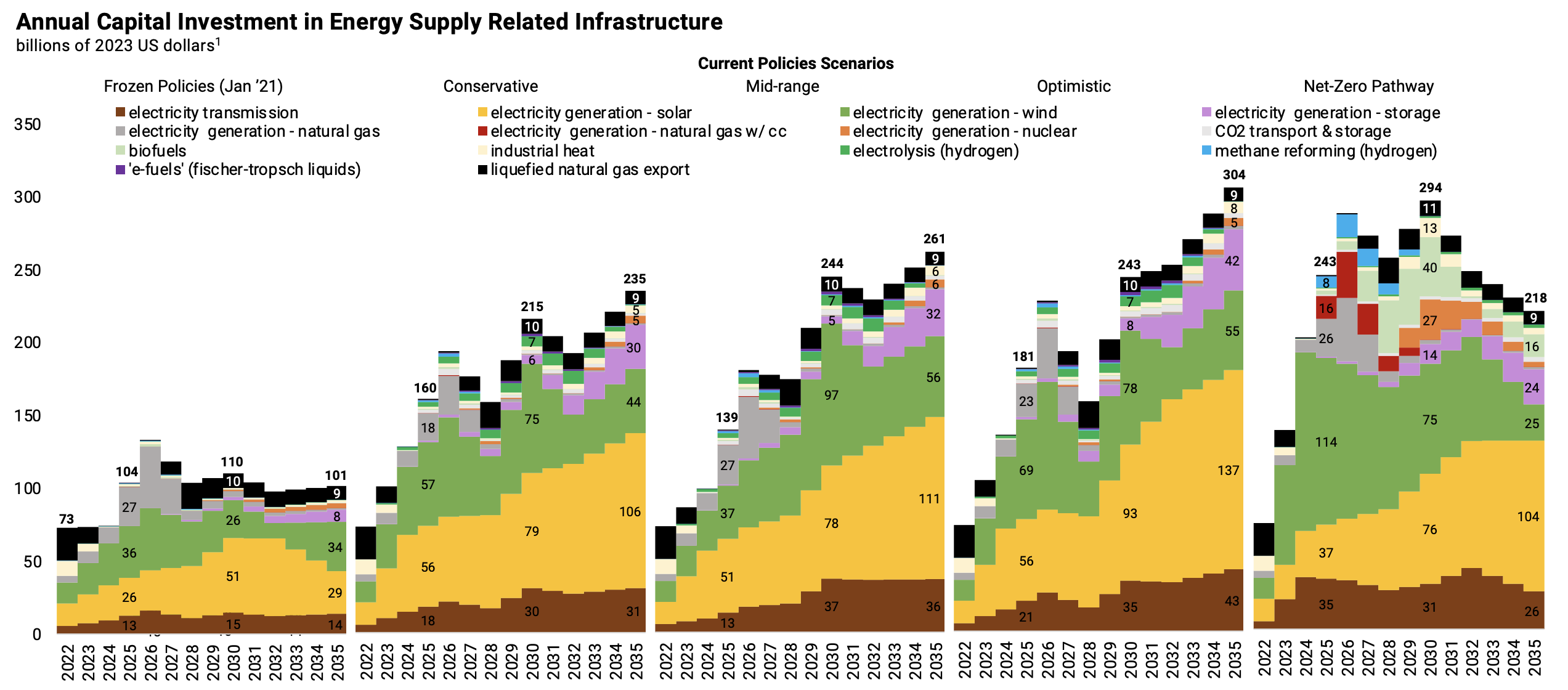Inflation Reduction Act: How Tax Credits & Incentives Can Power The Future Of Clean Energy

Written by Sharini Rao
As climate change continues to change our planet, policymakers have stepped forward to implement more sustainable solutions to create a greener future. Supplementing the *Paris Agreement created in 2015, The Inflation Reduction Act (2022) is one example of the United States’ greatest investments in clean energy initiatives.
Table of Contents
The Inflation Reduction Act (IRA): A Breakdown of Incentives
1. What is the IRA?
2. Clean Transportation (EV Tax Credits)
Eligibility
3. Renewable Energy Production & Investment: Production Tax Credit (PTC) and Investment Tax Credit (ITC)
4. Clean Energy Manufacturing: Advanced Manufacturing Production Credit (AMPC)
5. Energy Efficiency (Residential & Commercial)
Funding for Emission Reduction Technologies
Impact of the IRA: CO2 Emissions & Annual Capital Investments
↓ Member Exclusive Content, Sign Up for FREE to Access ↓
The Inflation Reduction Act (IRA): A Breakdown of Incentives
What is the IRA?
The Inflation Reduction Act (2022) is a landmark climate legislation investing nearly $400 billion in clean energy, emissions reduction, and environmental justice. Aiming to reduce greenhouse gas emissions by over 40% of 2005 levels by 2030, and combined with the **Bipartisan Infrastructure Law, the IRA is expected to drive significant economic growth. While tax credits may reduce federal revenue in the short term, they are anticipated to boost economic activity and long-term investments, contributing to a more sustainable future.
Clean Transportation (EV Tax Credits)
The IRA provides monetary benefits to encourage the purchase of Electric Vehicles (EV’s). Although using an EV saves money on fuel, it's much more expensive compared to ICE vehicles due to the high cost of producing EV batteries. Because of this, the government uses tax credits as a way to stimulate demand and increase EV market share.
To expand the government's efforts of promoting a more sustainable future, the IRA allows EV owners who purchase a new EV to be eligible for up to $7500 of tax credit with the purchase of a 2023 EV onwards. To further incentivize the public, the act also introduces a credit for used EVs of up to 30% of the vehicle or $4000. This encourages EV purchase to become more equitable amongst a wider range of the population. EV commercial tax credit of up to $40,000 is also available for businesses and tax-exempt organizations that buy EVs.
Eligibility
Check if your Vehicle is Eligible for Federal Tax Credits: Federal Tax Credits for Plug-in Electric and Fuel Cell Electric Vehicles Purchased in 2023 or After
Renewable Energy Production & Investment: Production Tax Credit (PTC) and Investment Tax Credit (ITC)
In addition to EV tax credit, the IRA extends the Production Tax Credit (PTC) and Investment Tax Credit (ITC) for renewable energy projects (eg. wind, solar, geothermal, biomass, etc). The ITC and PTC allows taxpayers to deduct a percentage of the cost of renewable energy systems from their federal taxes.
1. Production Tax Credit: Credit for electricity sold to an unrelated person and produced from the following renewable sources: wind, biomass, geothermal, solar, landfill and trash, hydropower, and marine and hydrokinetic energy.
2. Investment Tax Credit: Tax Credit for investment in renewable energy projects including fuel cell, solar, geothermal, small wind, energy storage, biogas, microgrid controllers, and combined heat and power properties. The Investment tax credit provides place-based bonuses for investing in low-income communities and communities that have historically depended on the fossil fuel industry for jobs or been harmed by pollution.
Clean Energy Manufacturing: Advanced Manufacturing Production Credit (AMPC)
Because the government also aims to boost domestic production of clean energy technology, the IRA introduces the Advanced Manufacturing Production Credit (AMPC) to incentivize U.S. manufacturing of solar modules, wind turbines, battery cells, and critical minerals.
Benefits of the AMPC:
- Encouraging Domestic Production: Reduces dependency on foreign imports by incentivizing U.S. manufacturing of clean energy components.
- Creating Jobs: Promotes job creation in the clean energy sector, supporting economic growth.
- Accelerating Clean Energy Adoption: Lowers production costs of clean energy technologies, speeding the transition to renewable sources and reducing emissions.
- Enhancing Competitiveness: Strengthens the U.S. position in the global clean energy market.
Energy Efficiency (Residential & Commercial)
To encourage homeowners to use cleaner energy sources, the Inflation Reduction Act (IRA) created the Home Energy Efficiency Tax Credit, which allows homeowners to receive financial incentives for making energy-efficient home improvements; This includes upgrading insulation, windows, doors, and HVAC systems. These measures aim to reduce energy consumption, lower utility bills, decrease greenhouse gas emissions, and support the transition to cleaner energy sources.
Key points of the Home Energy Efficiency Tax Credit:
- Upgrading Insulation: Maintains temperature, reducing heating and cooling needs.
- Energy-Efficient Windows and Doors: Reduces heat loss and gain, enhancing efficiency.
- High-Efficiency HVAC Systems: Lowers energy consumption and improves comfort.
- Additional Improvements: Includes energy-efficient water heaters, solar panels, and geothermal systems.
In addition to residential incentives, the IRA also provides incentives for commercial building owners to improve energy efficiency by upgrading to cleaner energy sources. These measures are designed to reduce the overall carbon footprint of commercial properties and promote the use of sustainable energy practices.
Commercial Building Incentives:
- Energy-Efficient Upgrades: Incentives for lighting, HVAC systems, and insulation.
- Renewable Energy Adoption: Support for integrating solar panels and wind turbines.
- Building Automation Systems: Optimizes energy use and reduces costs.
- Green Building Certifications: Additional incentives for achieving certifications like ***LEED.
Funding for Emission Reduction Technologies
The IRA also aims to tackle emissions by allocating funding for emission-reduction technologies; This includes reducing methane leaks and capturing carbon dioxide before it enters the atmosphere.
Methane Emission Reduction Program: The IRA provides new authorities under Section 136 of the Clean Air Act to reduce methane emissions from the petroleum and natural gas sector through the creation of the Methane Emissions Reduction Program. The Methane Emissions Reduction Program will provide more than $1 billion in financial and technical assistance through multiple funding opportunities.
Carbon Capture Technology: The Inflation Reduction Act (IRA) also expanded the eligibility for tax credits for the development of carbon capture projects. The funding helps incentivize creation and high capital costs of carbon capture technologies. Carbon capture is a process that separates and captures carbon dioxide before it enters the atmosphere from industrial sources by performing point-source capture - capturing CO2 at the source before it releases into the atmosphere. An example is the cement industry which contributes to 5% of all carbon emissions. To combat this the cement industries have planned to use carbon capture technology to take the CO2 they produce and feed it to Algae. Sea Algae can then use CO2 for photosynthesis and produce biofuel that can replace 20-30% of fossil fuels.
Impact of the IRA: CO2 Emissions & Annual Capital Investments
The Rapid Energy Policy Evaluation and Analysis Toolkit (REPEAT), developed by Princeton University's ZERO Lab, analyzes proposed and enacted US energy and climate policies. This acts as a valuable tool to assess the impact of various energy policies, including the IRA. Data presented is pulled from the July 2023 Report, Climate Progress and the 117th Congress: The Impacts of the Inflation Reduction Act and Infrastructure Investment and Jobs Act
The REPEAT Project estimates that the IRA could reduce US greenhouse gas emissions 37% - 41% below 2005 levels by 2030.

With support from the IRA, CO2 emissions are expected to decrease to ~500-550 MMt/y in 2030 and ~200-240 MMt/y in 2035, which is up to 79% reduction from CO2 emissions in 2022. As emissions decline 75% from 2022 levels, clean electricity production and investment tax credits are expected to phase out and annual capital investment is estimated to reach up to $304 billion dollars.


The Inflation Reduction Act (IRA) represents a significant step forward in the US fight against climate change. By offering tax credits, financial incentives, investment in renewable energy technologies and projects, the IRA encourages the growth of clean energy solutions and reduction of emissions.
The initial response has been largely positive, but questions remain. Can the IRA effectively balance short-term economic needs with the long-term fight against climate change? The act's success will depend on its ability to spark the innovation needed to make clean energy affordable and accessible for all.
*Paris Agreement: An international treaty negotiated by 196 parties on climate change covering climate change mitigation, adaptation, and finance. The Paris Agreement brings all nations into a common cause to undertake ambitious efforts to combat climate change and adapt to its effects, with enhanced support to assist developing countries to do so.
**Bipartisan Infrastructure Law: A law put in place by the Biden administration to invest in improving/increasing infrastructure among other efforts.
***LEED: LEED (Leadership in Energy and Environmental Design) certification is a globally recognized system that evaluates the sustainability of buildings. Focused areas include key areas like water efficiency, energy use, and indoor air quality. The LEED certification encourages the design, construction, and operation of buildings that are good for the environment, people, and the economy.





